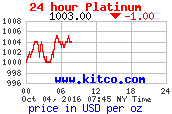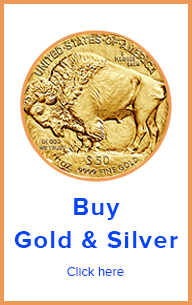How to Test Gold with Nitric Acid
Nitric Acid Gold Testing
How Properly Test Gold Items with Nitric Acid and Properly Interpret the Results
One of the most common, and most effective methods of testing if an item is gold, or not, is by using nitric acid. However, as you will see soon, this method is not infallible. As a very active gold buyer, I will concentrate only on the aspects of nitric acid as it relates to gold testing. The video below clearly shows how gold and copper alloy react to nitric acid
Topics Covered:
- What is nitric acid
- What does nitric acid reacts with
- What does nitric acid don’t react with
- What the nitric acid reaction looks like (Hallmarks)
- What does gold testing with nitric acid indicate
- What does gold testing with nitric acid does not indicate
- How to apply nitric acid for gold testing
- How to interpret nitric acid gold test results
- Tricky materials
- Conclusion
- Video
- Disclaimer
Nitric acid gold testing is just one indicator that an item may or may not be gold. What is important is to know how to interpret nitric acid test results. It is very easy to misinterpret nitric acid gold testing and end up buying something that is not gold. This article is about how to properly perform and interpret nitric acid gold test.
What is Nitric Acid
Nitric Acid (HNO3) is a highly corrosive, colorless, commercially available mineral acid. Older, oxidized nitric acid gets a yellowish tone. Commercially available nitric acid is 68% to 70% pure. The rest of the volume is water.
What Does Nitric Acid React With
Although nitric acid reacts with many materials, for the purposes of gold buying, nitric acid reacts with copper based alloys. The higher the copper concentration, the more powerful the reaction. Most fake gold jewelry is copper based, meaning a form of copper alloy, mainly type of brass (copper and tin). Although different and mild, Nitric acid also reacts with low karat gold, meaning 10K and below.
Nitric Acid Reaction With Copper Hallmarks
- Evident situation – Can’t miss what is happening – Called Cupric Reaction
- Acid rapidly turns green, bubbly and green fumes build up
- See video below
- This phenomenon is called Hard Cupric Reaction
Nitric Acid Reaction With Low Karat Gold Hallmarks
- Hardly noticeable cupric reaction
- Some fumes will barely come out
- No bubble are noticeable color change
- Nitric acid will leave a black mark, similar to smoke deposits, at points of contact with gold
- This phenomenon is called Mild Cupric Reaction
10K gold is only 41.6 pure. The lower the karat gold, the darker the mark will be. Starting 12K a mark will appear. In 10K gold, it will be noticeable. At below 8K, it will show as a smudge. Below 6K the reaction is evident, but not as powerful as with copper. Karat gold is 6K and above. Below 6K, and allow is not considered “gold”.
What Does Nitric Acid DO NOT React With
For the purpose of gold buying, which requires distinguishing gold alloys from other metals, gold does not react with
- Aluminum (common in fake gold jewelry)
- Stainless steel (common in fake gold jewelry)
- Zinc (common in fake gold jewelry)
- Tungsten (common in fake gold jewelry)
- Gold 12K and above gold
- Platinum
- Palladium
What Does Nitric Acid Gold Testing Indicates
- Hard cupric reaction (described above) indicates that the surface in contact with the nitric acid mostly copper based
- Mild cupric reaction (described above) indicates that surface in contact with nitric acid is at best low karat gold (10K or below)
- Absence of mild or hard cupric reaction indicates that the surface in contact with nitric acid is not copper
What Does Nitric Acid Gold Testing Does NOT Indicate
- Absence of mild or hard cupric reaction does NOT that the surface in contact with nitric acid is gold
How to Apply Nitric Acid for Testing Gold – Test the Core
Most gold jewelry has a Karat mark stamp (10K, 14K, 18K, 585, 750, etc) However “stamping is for free”. If the gold item is not stamped, and it looks like it is gold, it is a good idea to test the “core” of the item, not just the surface. For this, file a deep cut into the core of the item or file the surface of the item beyond any plating. In gold buying, what matters is the core of the item, not the surface, because the core is majority of the mass. A plating is more like a paint job. Apply the nitric acid to exposed core material.
How to Interpret Nitric Acid Gold Testing
Based on the above, here is how to interpret gold nitric acid test results
- Hard cupric reaction indicates that the surface of in contact with nitric acid is copper based
- No cupric reaction only means that the surface in contact with the nitric acid is not copper based. It is something else
- That there is no cupric reaction does not mean that the item is gold
- If the item is karat stamped, and its core does not react with nitric acid, most likely the item is a gold alloy with content as per the stamp. It can be something else though. There are excellent fakes out there
Tricky Materials
- There are excellent fakes and great simulants. Be careful with the following
- Gold plated silver – exposing the core helps, but it may be less evident when testing white gold
- Gold / zinc alloys. This is a light material with a little bit of gold. Looks really good. It blackens like low carat but it is of much lower contact. Plenty of old gold pocket watches are made of this
- Test chains in multiple places, you may be surprised with what you find
Conclusions
- Nitric acid is effective for detecting the presence of copper in an alloy
- A hard cupric reaction indicates lots of copper
- Mild cupric reaction indicates that at best the item is low karat gold (10K or below)
- No cupric reaction does not indicate that the item is gold, just that there little or no copper
- Test the core of the item, not just the surface
- Nitric acid gold testing is a way to narrow down the possibility of an item being gold or not
- Learn more and practice to improve your gold grading skills
- Learn electronic testing
Disclaimer: This article is educational only. No “buy or not buy” advice is presented.


![[Most Recent Quotes from www.kitco.com]](http://www.kitconet.com/charts/metals/gold/t24_au_en_usoz_2.gif)
![[Most Recent Quotes from www.kitco.com]](http://www.kitconet.com/charts/metals/silver/t24_ag_en_usoz_2.gif)
![[Most Recent Quotes from www.kitco.com]](http://www.kitconet.com/charts/metals/platinum/t24_pt_en_usoz_2.gif)










